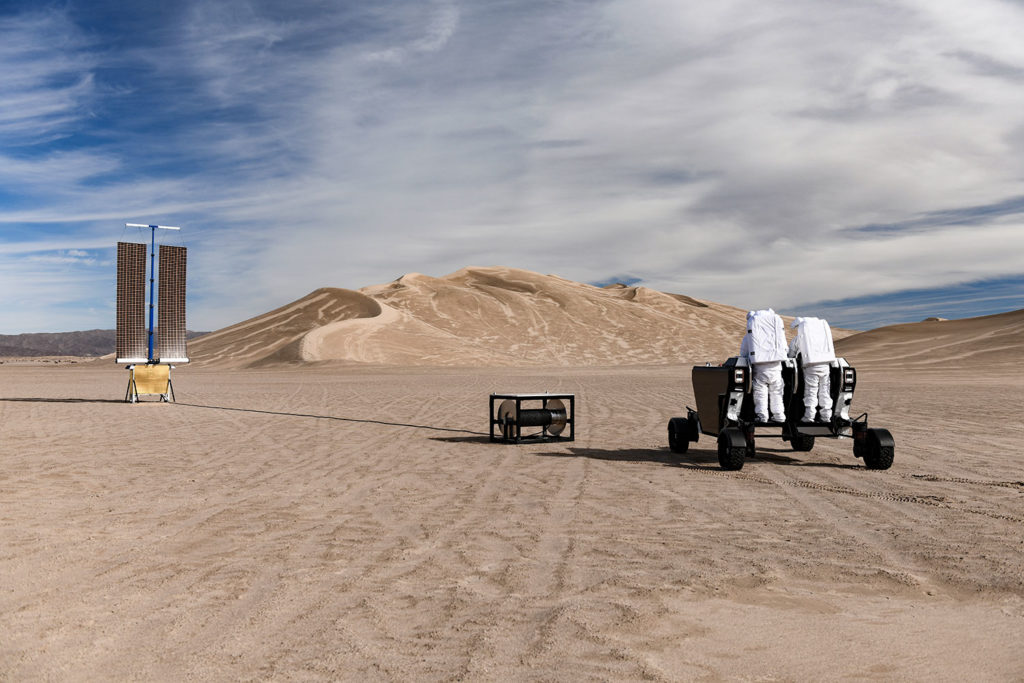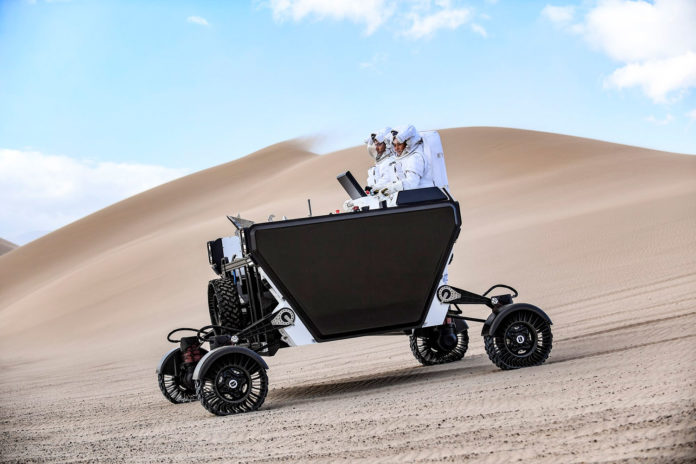A Californian aerospace startup Venturi Astrolab has developed the Flexible Logistics and Exploration (FLEX) rover designed to transport cargo and people across the surface of the Moon – and eventually Mars. The company plans to build a fleet of FLEX rovers to provide the mobility required to support a sustained human presence on the Moon and Mars.
FLEX is designed around a modular payload interface that supports intermodal transportation – from the lander to rover and back. Built with adaptive utility in mind, the golf cart-size FLEX can also serve as an unpressurized rover for up to two astronauts, in line with NASA’s Lunar Terrain Vehicle (LTV) requirements. The lunar rover has the capacity to carry a 1,500 kg payload under its belly before depositing them at its intended location.
FLEX is equipped with a suite of sensors for semi-autonomous operations. These allow it to independently align with and pick up payloads and give it the ability to avoid dangerous obstacles. It can also be modified to include a crew interface, allowing astronauts to ride on the rover while guiding it through lunar terrain.

The six-degree-of-freedom robotic arm allows FLEX to perform science and logistics activities in support of human operations. Furthermore, the lunar rover is equipped with a gimbaling antenna allowing it to maintain high-bandwidth communication with Earth.
“For humanity to truly live and operate in a sustainable way off Earth, there needs to exist an efficient and economical transportation network all the way from the launchpad to the ultimate outpost,” said Jaret Matthews, Founder, and CEO of Astrolab. “Currently, there is a gap in the last mile, and Astrolab exists to fill it.”
The Astrolab team recently tested a full-scale, fully-functional terrestrial prototype of the FLEX rover in the California desert near Death Valley. The tests included both crewed and telerobotic operations, deployment of a variety of large payloads, and engineering testing of the lunar rover‘s mobility performance in challenging terrain.
“As we transition from the Apollo era, which was focused on pure exploration, to now, where people will be living for longer periods on the Moon, the equipment needs to change,” said Chris Hadfield, Astrolab Advisory Board Member. “When we settle somewhere, we don’t just need to get people from one place to another, but we need to move hardware, cargo, life support equipment, and more. And it’s all dependent on mobility. It was not only a joy to drive FLEX but also see its size capability and get an intuitive sense of what this rover can do.”
